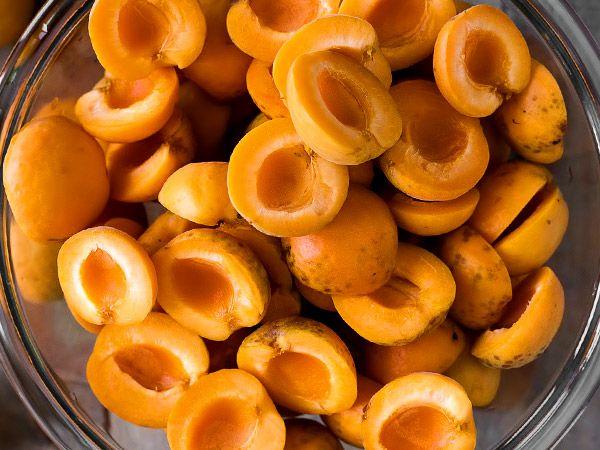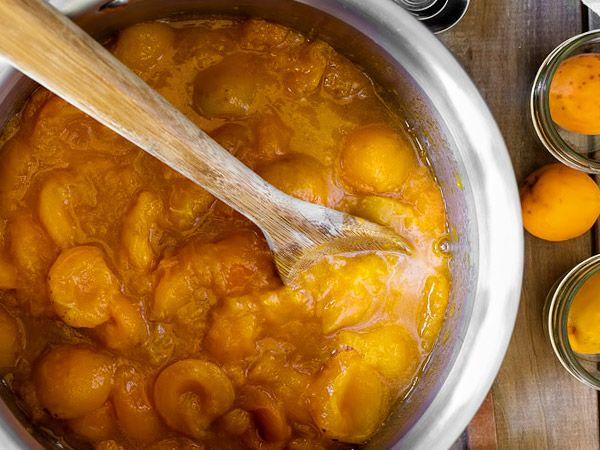Step-by-step recipe for making apricot jam with gelatin for the winter
Appetizing apricot jam with a juicy sweet taste with a pleasant sourness is a valuable source of vitamins. In winter, it is simply irreplaceable, as it reminds you of a warm, gentle summer, energizes and gives you a great mood. There are many ways and variations of its preparation. The simplest and fastest is the recipe for apricot jam made with gelatin. It turns out to be surprisingly tasty, beautiful, transparent and aromatic.
Features of making apricot jam with gelatin for the winter
Jam from juicy ripe apricots with the addition of gelatin is especially useful because of the minimal heat treatment. This sweet product, prepared for the winter, has a beneficial effect on the cardiovascular system and emotional state. Due to its jelly-like transparent consistency, such jam looks very attractive, which means it can decorate both everyday and festive tables.
Gelatin promotes the fastest thickening of the mass and shortens the overall heat treatment time. Therefore, the product retains the maximum concentration of nutrients inherent in fresh apricot fruits.
Required products for the recipe
To make apricot jam according to this simple and affordable recipe, you will need the following products:
- 3 kg of apricots;
- 70 g of instant gelatin;
- 2 kg of granulated sugar;
- 2 liters of filtered water;
- 15 g citric acid.

Ingredient selection rules
For the preparation of this jam, you can choose almost any kind of apricot. The main thing is that they have a pleasant aroma and expressive sweet taste. The fruit should be completely ripe, but not overripe, with a firm and firm texture. Greenish apricots are not suitable for this purpose, as they can spoil the taste of future jam.
Each apricot fruit must be carefully examined. They must be the same in shape and color.
Any surface defects are unacceptable.

How to prepare containers
When you start making apricot jam with gelatin, you need to carefully examine the glass jars to make sure there are no chips or cracks. There should be no rusty marks on the metal screw caps.

There are several ways to disinfect containers:
- Wash with baking soda and put in the oven, preheating it to 160 degrees. Hold until all the droplets are dry. Excessive heating should be avoided to prevent glass containers from bursting.
- Place a wooden board at the bottom of a large saucepan. Place containers on top, and fill the free space with water. Bring to a boil and keep for 15 minutes.
- Fill a saucepan with water and place over medium heat. Cover with a metal sieve or wire rack. Place containers from above with the neck down. After boiling water, they will be steam sterilized.

Cooking process
The process of making apricot jam with gelatin is simple and takes a minimum of time:
- Blot thoroughly washed fruits with napkins.
- Cut in half and remove the nucleoli.
- Cut the apricot halves into several slices.
- Take a thick-bottomed cauldron or a spacious enamel pot and lay out the apricot wedges.
- In a separate saucepan, boil water and dissolve sugar in it.
- Cook for a few minutes with constant stirring, then strain.
- Pour the apricot wedges with the resulting sugar syrup and put on fire.
- After boiling, boil for ten minutes at medium flame. Do not forget to stir and skim the resulting foam.
- Turn off the hotplate and cool the jam.
- Then boil in the same way two more times.
- At the third stage of cooking, add citric acid.

Now you can start preparing gelatin:
- Pour the contents of the bag into a glass or ceramic container and pour two glasses of warm water heated to 40 degrees.
- After an hour, heat the gelatinous solution to 80 degrees and strain.
- Add to the jam just before sterilization.
Further storage of jam
To store apricot jam with gelatin, you should choose a dry, dark and cool place with an air temperature not exceeding + 10-15 ° C. If these conditions are met, the product will retain all its useful properties for three years.








